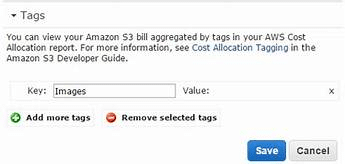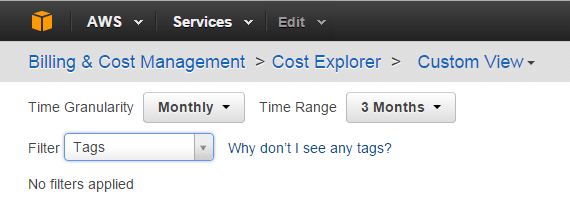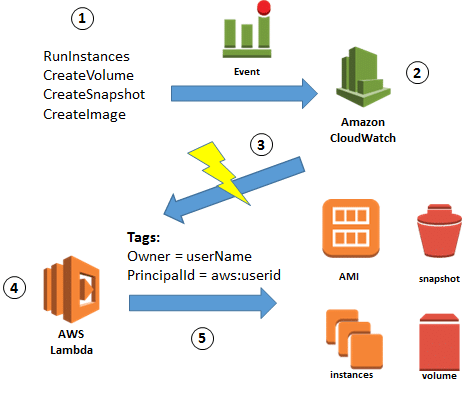AWS Tagging Best Practices
AWS Tagging Best Practices
In this article, you can discover some of the AWS Tagging Best Practices you can try for ensuring an organized and safe AWS environment. Metadata can be assigned to AWS resources as tags. Every tag reflects a label having a user-defined key and a value of its own. They aid in managing, identifying, organizing, searching, as well as filtering AWS resources. It is possible to create tags for the sake of categorizing resources according to their purpose, the owner, their context or other differing criteria.
Keep in mind
It is of great importance for you to avoid adding personally identifiable information, or any different sensitive and confidential information in your tags. Tags can be accessed by various AWS services, and also billing. They are not made for being used with sensitive or private data.
In this article, you will find a description of the most utilized tagging categories and ways for aiding you in implementing consistent and efficient tagging practices.
Every tag includes 2 parts:

AWS Tagging Best Practices – Tags
- Tag key
Examples: Environment, or Project.
They are case sensitive.
- Tag value:
Examples: 112233 or Production
They are also case sensitive.
It is possible to start adding, changing or removing tags for 1 resource after the other from every resource’s CLI, service API or service console.
AWS Tagging Best Practices to Start with:

AWS Tagging Best Practices – Tag Resources
While creating a tagging technique for AWS resources, go with the below best possible practices:
- Rely on a standardized, case-sensitive format for your tags, then add it similarly over each resource type.
- Take into account tag guidelines supporting a variety of purposes, such as organization, the management of resource access control, automation and cost tracking.
- Never turn to store personally identifiable information or any sensitive, private or confidential data in your added tags.
- Keep in mind that it is a simple step for you to alter your tags to accommodate your changing business needs, but always take into consideration the consequences that could get inflicted in future changes. For instance, making any changes in access control tags will require you to update the policies referencing the changed tags and control access to your resources.
- Utilize automated tools for the management of your resource tags. AWS Resource Groups and the Resource Groups Tagging API pave the way for programmatic control over tags, simplifying the process of automatically filtering, managing, and searching for resources.
- Go with a lot of tags instead of very few tags.
To Sum It Up:
1. Have knowledge of how every tag created is going to be used
3. Build a consistent tag naming convention
5. Allow for automation in your tag management techniques
What are the Available Tagging Categories to guarantee AWS Tagging best practices?

AWS Tagging Best Practices – Filter by Tags
Companies and organizations most efficient in utilizing tags mainly create business-relevant tag groupings for the sake of organizing their resources across the following categories: technical, business, automation and security. Companies and organizations which rely on automated processes for managing their infrastructure will take into account automation-specific tags.
Technical Tags
- Name: individual resources
- Application ID: resources associated with a particular app
- Application Role: a resource’s function
- Cluster: Identify resource farms that share a common configuration and perform a specific function for an application
- Environment: whether it is a resource for production, development, or test
- Version: to differentiate between resource or app versions
Tags for Business

AWS Tagging Best Practices – Tag Categories
- Project: projects supported by the resource
- Owner: the person responsible for the resource
- Cost Center/Business Unit: cost center or business unit of a resource, mainly for tracking and cost allocation
- Customer: client served by a specific group of resources
Tags for Automation
- Date or Time: date or time for starting, stopping, deleting, or rotating a resource
- Opt-in or Opt-out: including or excluding a resource from an automated activity so as to start, stop, or resize instances
- Security: set needs, like encrypting or enabling VPC flow logs; identifying route tables or security groups requiring additional security
Tags for Security
- Confidentiality: data confidentiality level supported by a resource
- Compliance: workloads that should remain to adhere to particular compliance needs
AWS Tagging Best Practices for Limits and Requirements of Naming Tags:

AWS Tagging Best Practices – Add Tags
The below mentioned are basic naming and usage requirements that are applied to tags:
- Every resource may get a max of fifty user created tags.
Keep in mind
System created tags starting with “aws:” get reserved for use by AWS, and won’t count against this limitation. There is no way for you to edit or delete a tag starting with the “aws:” prefix.
- For every resource, the tag key needs to be unique and include just 1 value.
- The tag key needs to have a min of one Unicode character and a max of 128 Unicode characters (UTF-8).
- The tag value needs to have a min of zero Unicode characters and a max of 256 Unicode characters (UTF-8).
Keep in mind
A number of services may not allow tags to have an empty value with a length of zero.
- Acceptable characters may be different according to the AWS service at hand. Mainly, the characters that are acceptable for tags are the following: numbers, letters, spaces in UTF-8, and those: “ _ . : / = + – @” .
- Both tag keys and tag values are case sensitive.
For your AWS tagging best practices, you will need to choose a strategy for the capitalization of tags, and the consistent implementation of that specific strategy with every single resource type. For instance, make up your mind to know if to utilize “Businessunit”, “businessunit”, or “BusinessUnit”, then go with this exact convention with all your future tags. Remember to always prevent yourself from the use of similar tags with inconsistent case treatment.
Whichever company or organization utilizes AWS greatly for all its purposes, is going to have to build up an efficient tagging strategy that promotes and simplifies their work. Take into consideration the AWS tagging best practices and hints mentioned in this article, while keeping in mind your organization’s overall goals.
Upon finally making up your mind on a specific AWS tagging strategy, you are going to have to start developing an efficient plan as to how to add and maintain your AWS cost allocation tags.
See Also